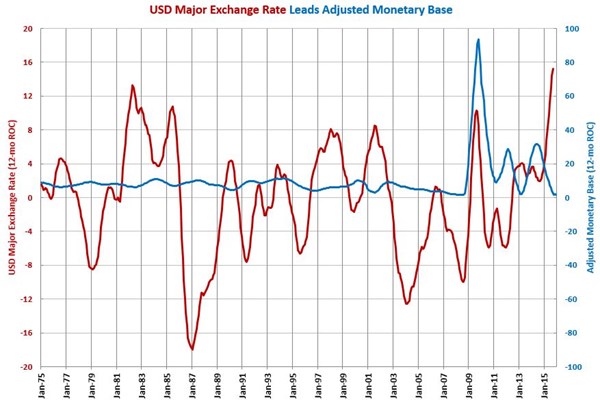Monetary Base above $4 Trillion for Second Month
But, the rate of change contracted for the fourth month in a row.
In September 2015, the monetary base was $4.049 trillion. This was a slight increase from the previous month and put the monetary base above $4 trillion for the second month in a row. Since July 2014, just before the end of QE, the monetary base has been bouncing above and below $4 trillion. Compared with one year ago, the monetary base decreased for the fourth month in a row. The monetary base contracted for five months in a row from June to October 2012. Quarter-over-quarter the rate of change contracted 1.1 percent, which was the fastest contraction since January 1950. Therefore, this represents a significant tightening of monetary policy that seems to be going unnoticed by many. The annual rate of change has slowed to 2.6 percent, which was the slowest rate of growth since March 2013. It has been decelerating since June 2014. This is a negative sign for future capital spending. Unless the Federal Reserve starts increasing the money supply, the annual rate of change will continue to decelerate.
You can see how the monetary base leads various machine tool sales and consumption data as well as primary plastics processing equipment at our monetary page.
The real 10-year treasury rate is a leading indicator for the adjusted monetary base. The year-over-year change in the real 10-year treasury has increased the last four months. This indicates a slower rate of growth in the monetary base. However, 10-year rates are being influenced by the Fed's own purchases and investors front-running the Fed's purchases. So, the 10-year may not be an accurate indicator of the money supply at the moment.
Also, the U.S. dollar major exchange rate (the USD compared to the other major currencies of the world) and the U.S. dollar broad exchange rate (the USD compared to most world currencies) appear to be good leading indicators of the U.S. monetary base. The US dollar against the other major currencies of the world is growing at its fastest rate ever. Normally, this indicates an expansion of the monetary base is forthcoming. But, the Fed seems to be moving the monetary base in the opposite direction.



.JPG;width=70;height=70;mode=crop)